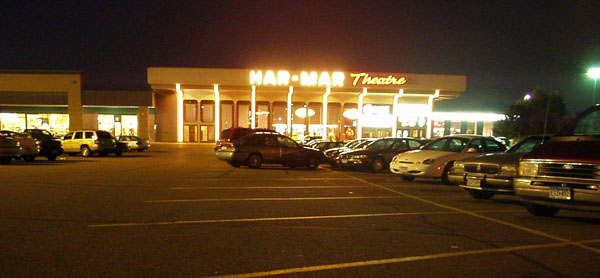
The Har Mar Theatres in Roseville, MN, USA is a 1970’s landmark to many. It was originally constructed as a Twin with a 540 seat auditorium and a grand 900 seat auditorium. Of course as multi-plexes began to dominate, filling a 900 seat auditorium was next to impossible. Har Mar underwent its first major makeover by splitting the large auditorium into two.
From the booth (which I forgot to nab a picture of) you can still see the large projection glass window spanning both auditoriums 2 and 3. The auditoriums themselves are long and narrow as a result of this change. As I am told, cinema 2 still uses screen material from the gigantic original silver screen.
In the mid 80’s, United Artists built an 8-plex only about a mile down the road. So, then owner General Cinema, captured the opportunity to buy a vacant grocery store in the mall and converted it into 8 additional screens. Due to the mall’s layout, physical attachment between the two theatres was not possible and thus, Har Mar Theatres is comprised of two separate buildings.
Running a “brother/sister unit” provides some interesting hurdles not found in single structure buildings. From a customers’ standpoint, trying to figure out which building your movie was playing in was a constant battle--especially during the chilly winter months in Minnesota.
Even when it wasn’t below freezing, being a projectionist in a building like this was a major headache. If you were in one building and a projector went down in another building, you were royally screwed. Moving film from one theatre to another was another great annoyance. The pictured “Pearl Harbor” had to be broken down into reels and rebuilt since it would not fit on our movie-movers. Imagine carrying a 2 ½ hour movie on your shoulder down a flight of stairs, out onto an icy sidewalk, and up another set of stairs.
1. The Har Mar Theatres at night is a sight to see. Hundreds of cascading lights trim the sides of the building with a randomly blinking “Har Mar” sign above. The word “Theatre” doesn’t do anything, and actually reads Theatres with an “S”, but we could never get the go-ahead to fix it. The electronics to run these lights was constantly breaking and due to its proprietary makeup, electricians would have to be quite creative to fix them. Anyone want a job changing light-bulbs?
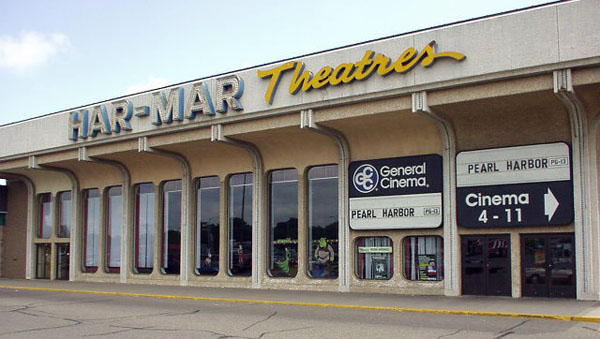
Outside Cinemas 1-3 during the day.

Outside Cinemas 1-3 looking back towards 4-11. The sidewalk leading down to the 4-11 theatres was often packed tight for popular movies like Star Wars and Lord of the Rings (I think this was during the busy periods of Pearl Harbor---just kidding).
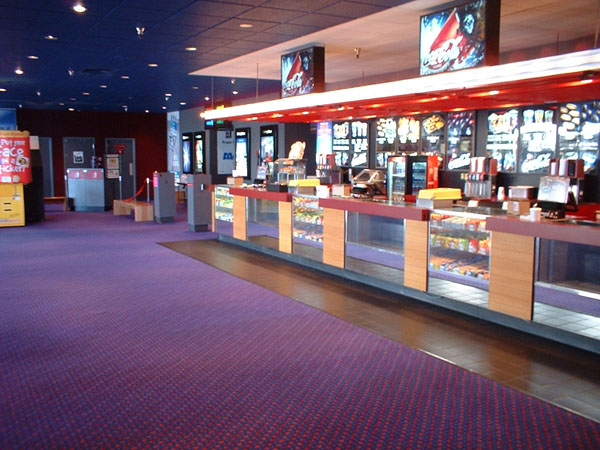
The concession stand and lobby of the 4-11 complex (taken under AMC’s reign—note the Coke signs—ironically you’d set your Coke cup into a cupholder with a Pepsi logo on it )
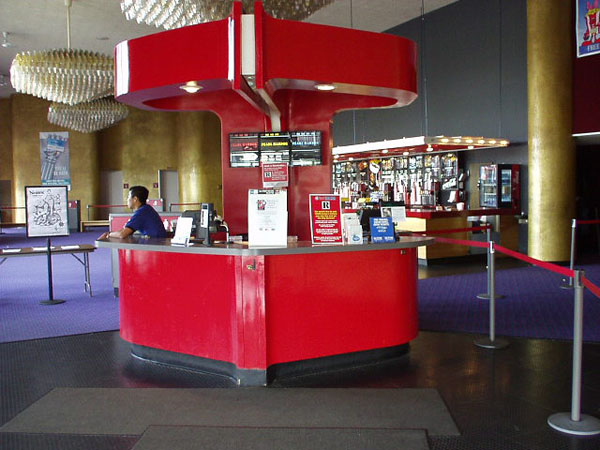
The ticket booth of cinemas 1-3. Yes, filling our largest 540-seat auditorium was handled by only 2 cashiers. Our foyer could only handle about 20 people, so popular movies typically had hundreds waiting outside to get in. The 4-11 cinemas also only had two cashier stations.
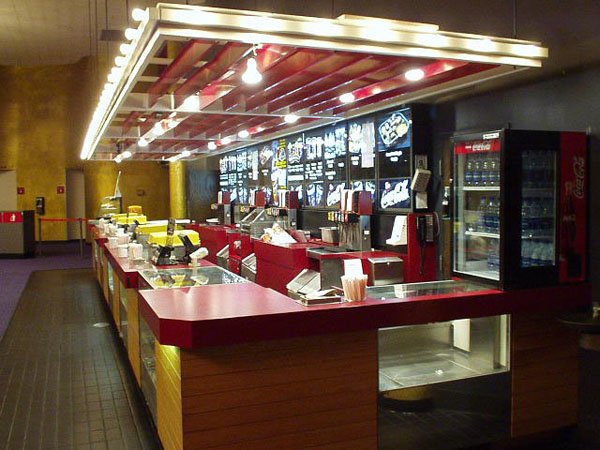
The 1-3 concessions stand. The 5th to be built in this theatre, according to my sources. The original was a protruding triangle. One side for each of the original two theatres.
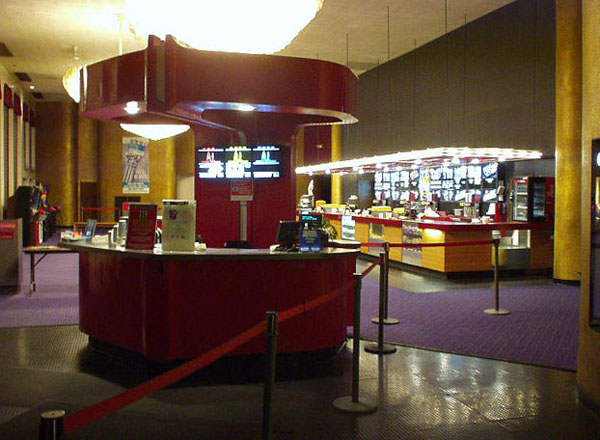
The great chandeliers only used 30-50% of their light bulbs at any one time. If they were all on at once, one would go blind. For longevity reasons, the bulbs in the chandeliers were the same used in traffic lights. Each chandelier had hundreds of individually hanging glass. I’m glad we weren’t located in an earth-quake prone state. Back in the old days, these chandeliers would actually turn slowly. For safety concerns, the motors were disconnected and are no longer used.
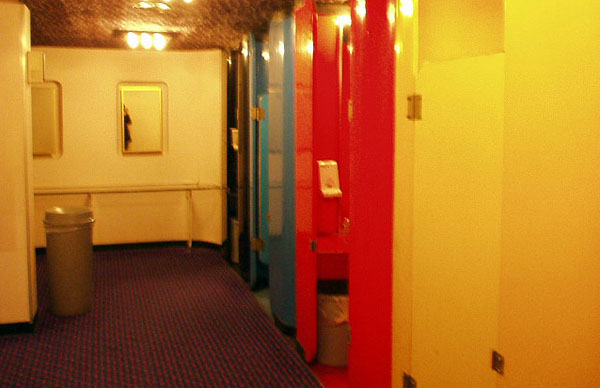
A shame these pictures came out so blurry, but our women’s bathrooms evidentially have inspired everyone from tourists to a rock band (Har Mar Superstar). We would constantly have women ask if they could take their male companions in to take a look.
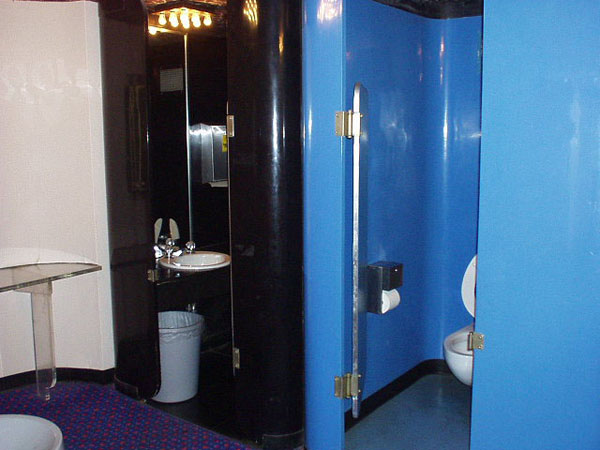
A shot of the stalls on the inside. Each stall had its own sink.
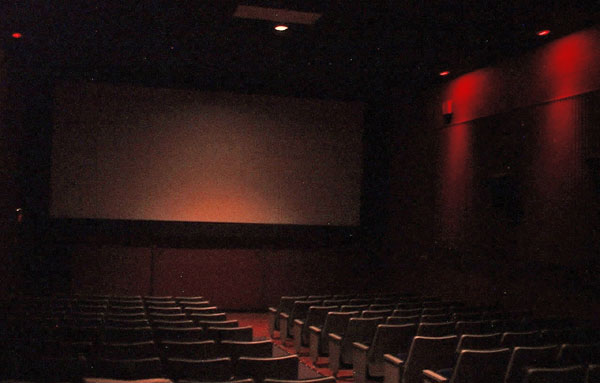
One of the 4-11 cinemas before AMC told us to remove the red side-lights.
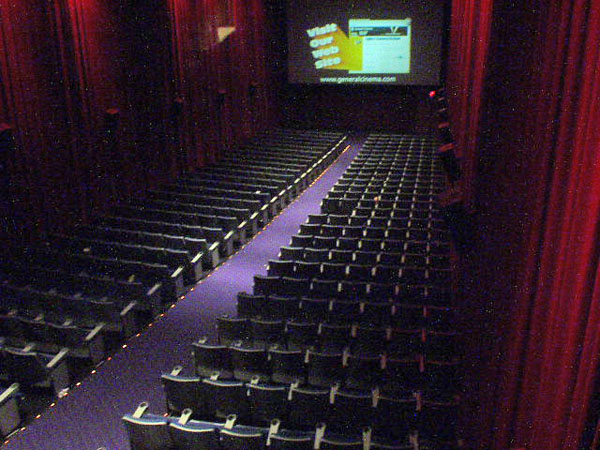
Cinema 2 in the 1-3 plex. Note the long narrow seating arrangement as a result of splitting an auditorium in half. Each of the two resulting auditoriums held over 400 guests.
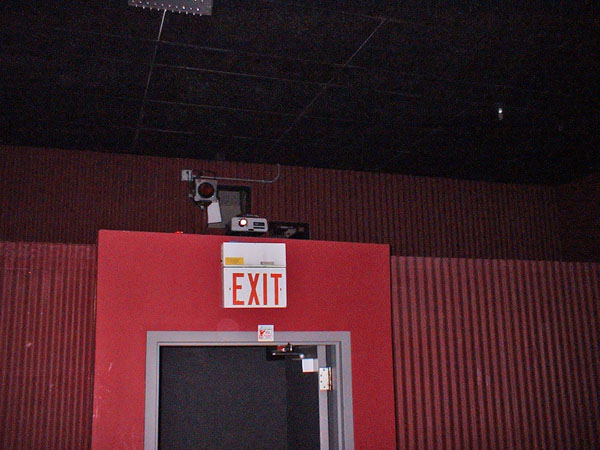
The slide projectors in our 4-11 auditoriums were actually inside the auditorium. It was the most hilarious thing to walk up into the booth and see some poor person dangling out of the small portal windows trying to change slides. On rare occasion we’d actually find people watching movies from up there.
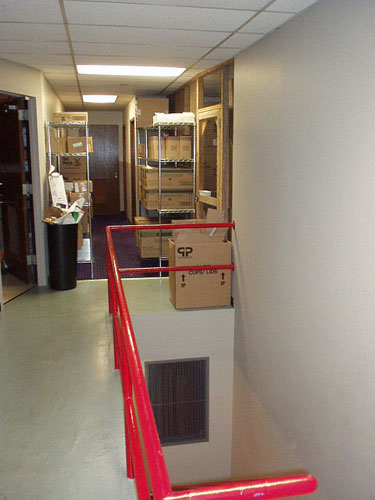
Top of the stairway in cinemas 1-3. The manager’s office at the end of the hallways was huge and had a storage closet bigger than the other two offices in this building. Unfortunately it wasn’t heated (can you believe that? In Minnesota?) so it was pretty much used for storage.
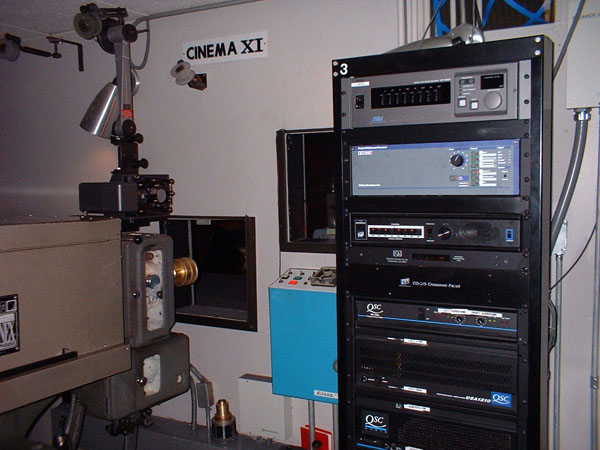
A typical setup in cinemas 4-11. This auditorium had only three digital cinemas. Two SDDS and one Dolby Digital. Everything else was analog. No turrets on these Century projectors. To switch aspects, requires changing the lens by hand (and make sure to remember to do so when showing two films).
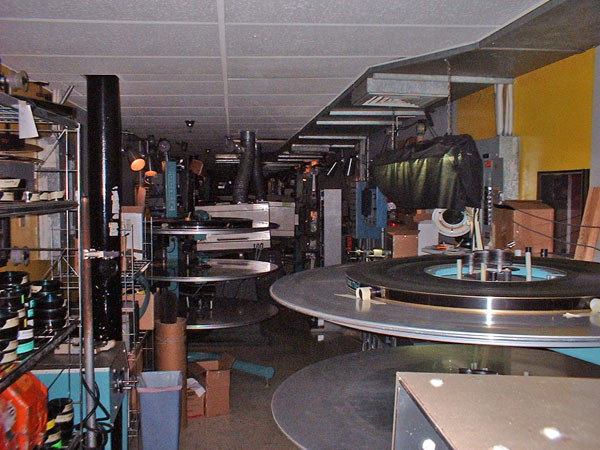
Moving film down this maze of projectors was a constant nightmare. Not to mention the film moving problems I mentioned before. This is auditorium 7 on the right, with auditorium 10 on the left. 4-7 are on the right and 8-11 are on the left. The make-up table is just below the veiled fluorescent lamp.
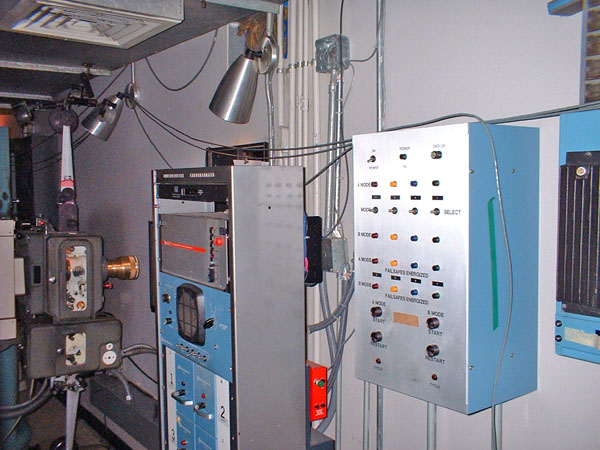
Here is a shot of the Interlock system. You could interlock cinema 4-7 or 8-11 together or any combination of the ones in-between. We would often run a full bank of projectors for General Cinema’s Summer Movie Camp.
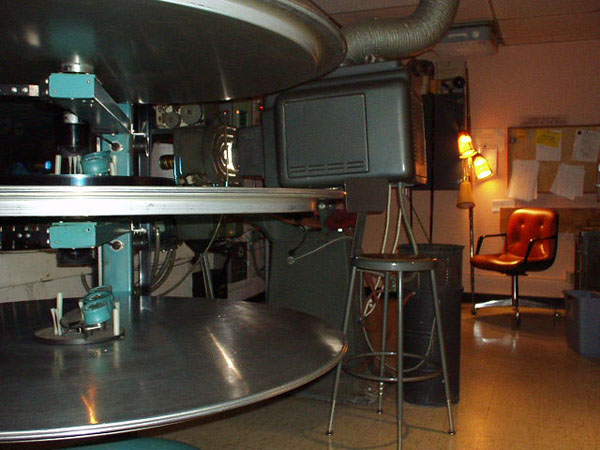
Auditorium 1 at the Cinema 1-3. Note the jerry-rigged fan attached to the ceiling for room ventilation. This is our only THX auditorium with Century head and Christie platter and Zenith lamphouses. For those of you who are familiar with Christie platters, these are from the era when the center cluster was NOT removable.
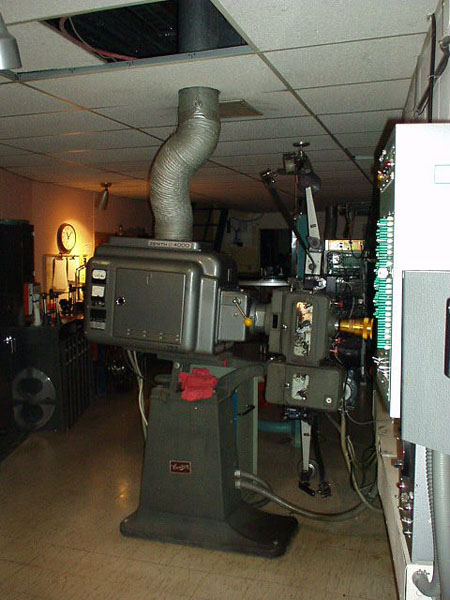
Here is auditorium 2.
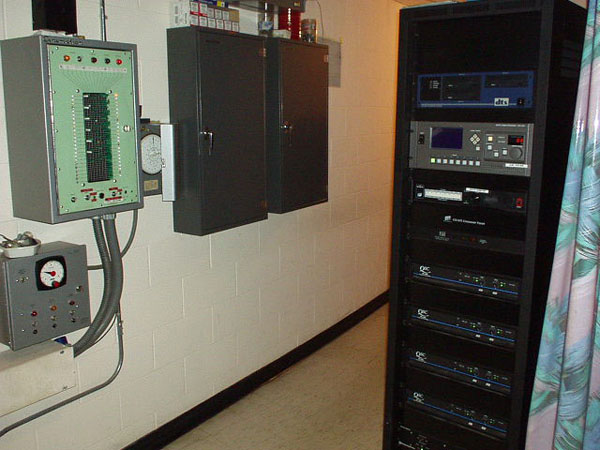
The sound rack and automation for auditorium 2 (more about the automation later). Yes that is a shower curtain draping over the right-side. Both booths have bathroom facilities.
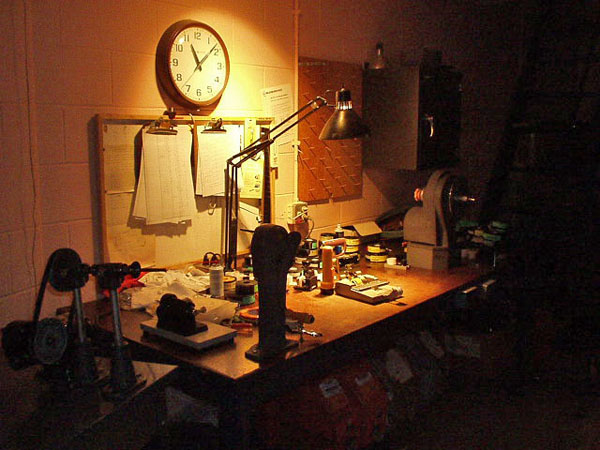
The make-up table for Cinemas 1-3 with our ancient rewinder.
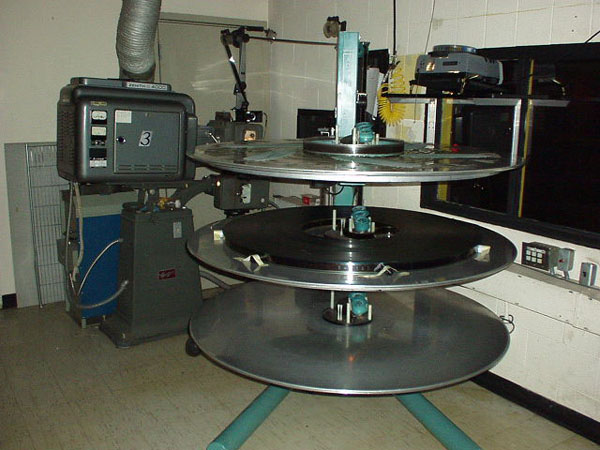
Auditorium 3. You can see in the middle-right part of the picture, the 6 buttons for controlling lights and curtain (although only cinema 1 had a curtain).
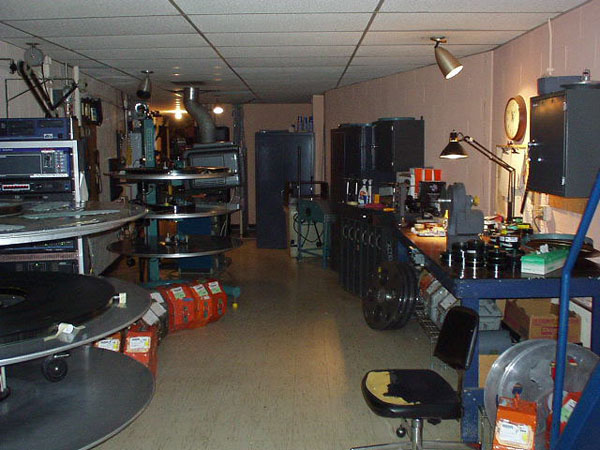
Auditorium 3 in the foreground and auditorium 2 in the background.
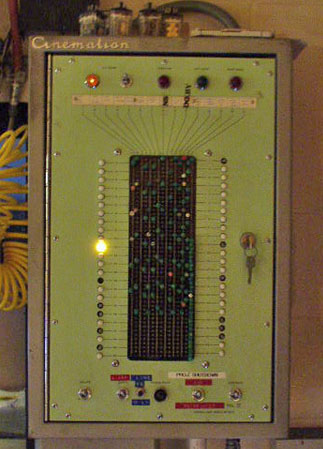
23. Yes, for you young birds, this is an automation panel. It slices, it dices, and Don’t you want to know how it works!?!? In its day it was probably awe inspiring. Compared to today’s automation systems, it probably looks more like a tricked-out cribbage board where each player has to wear metal helmets with blinking lights on them.
Basically here’s how it works. At the begging of the day the white lights that run vertically on the sides of the board start at the top left: position 1.
When you press the black circle in the center/bottom, the light moves to position 2 (on the top right side of the board).
When the light hits a new line, there are pegs stuck in the board to signal the projector to perform certain tasks. In this case, line 2 has several pegs to start dimming the lights to trailer level, start the motor on the projector, turn off the slide projector and movie-tunes, and sound a bell to indicate the projectionist (if inclined to do so) should start praying. Each column is given a specific task for lights, sound (even sound format), motors, slides, etc.
A magnetic cue is placed on the film to signal the automation system to jump to the next line, which is typically programmed with sound on and changeover open. “and now…the pre-show countdown.”
Another cue hits and the lights come all the way down to presentation level. Near the end another cue brings the lights up and closes the changeover. And the last cue turns the motor off, turns the movie-tunes and slides back on, and brings the lights all the way up.
The pattern can be repeated up to 6 times for six shows depending on how many tasks you assign the automation. It is also connected to a 24-hour timer so you can program it to initiate the start cue at any given time.
Pretty easy, eh? Well hold your horses. What happens if the film stops, breaks, or something of that nature? Let’s say the film stops during its normal run. You are now on, say, line 4, but line 5 is set to bring the lights up and not re-start the projector (hitting that black circle button only moves the light to the next line).
To solve this you could simply keep hitting the black button (manual cue) and move to the pegs for the second show (starting things over again). But then you don’t have programming for your last show. Nope, you have to flip one of the switches for “bypass” and keep holding down the manual cue button until the lights are back up at the top (approximately 1 second to switch from one light to another). But wait, the automation isn’t the same because you’ve lost several cues. So once you hit line 2 the projector will start up, but no cue tape will tell the projector to cue ahead to the line it should be on for feature presentation mode.
Luckily there is a button that will initiate whatever you have programmed on the last line. Simply borrow a peg from an unused area and move it to the “start motor” column and it will jump ahead and initiate that feature. Borrow several other pegs if you want to initiate several different functions. Then, the light will stay where it is and be ready to take the remaining cues and perform the correct functions.
Sadly (or maybe not) these beasts were retired when AMC bought the theatre and replaced with newer automation systems.
| 
 Home
Home
 Products
Products
 Store
Store
 Forum
Forum
 Warehouse
Warehouse
 Client Login
Client Login
 Contact Us
Contact Us


 Home
Home
 Products
Products
 Store
Store
 Forum
Forum
 Warehouse
Warehouse
 Client Login
Client Login
 Contact Us
Contact Us
